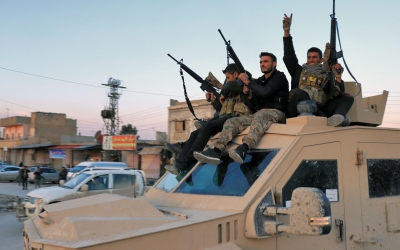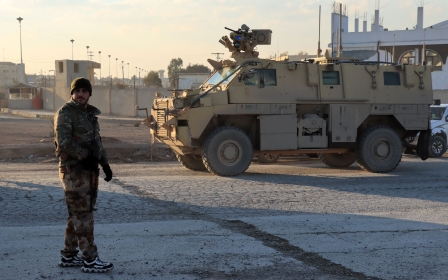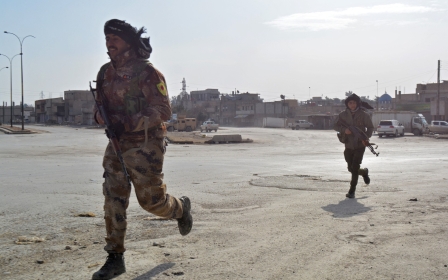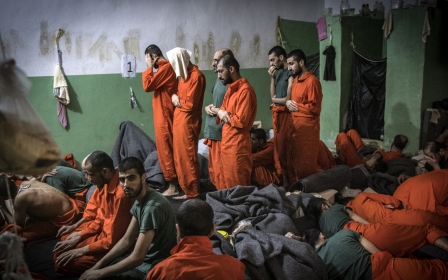Syria: Hundreds reported killed since Islamic State attacked Hasakah prison
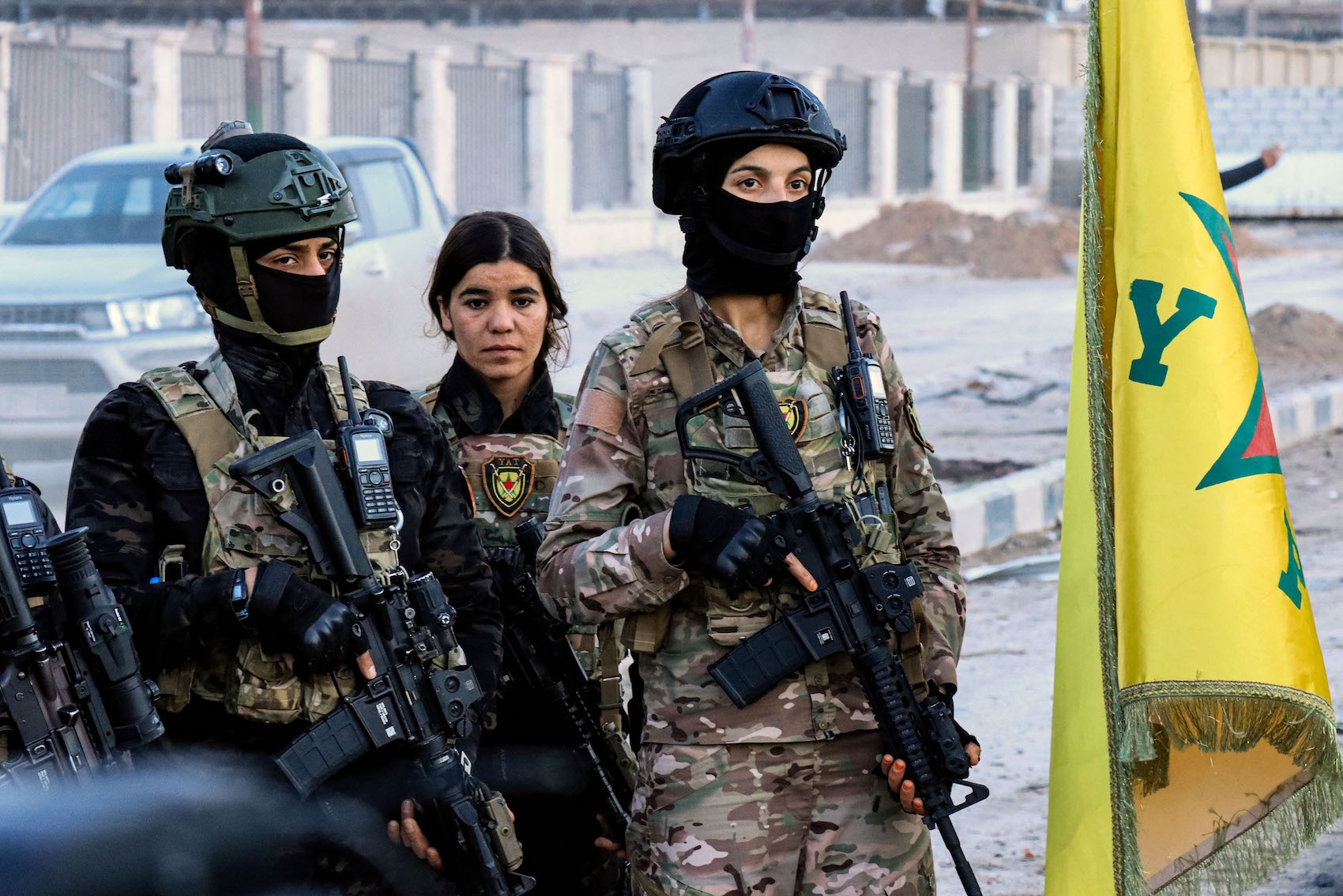
More than 330 people have been killed in heavy fighting since Islamic State (IS) fighters first attacked a prison in northeast Syria over a week ago, a UK-based activist group said on Sunday.
On 20 January, IS launched its biggest assault in years on the Ghwayran prison in the Kurdish-controlled city of Hasakah, in an attempt to free prisoners belonging to the group who had mutinied.
Fighting first engulfed the prison after IS fighters rammed two explosives-packed vehicles into the facility, which is thought to have housed more than 3,500 suspected members of the group.
Since then, the death toll in fierce clashes has risen to 332, after the Syrian Democratic Forces (SDF) found more than 50 bodies overnight in prison buildings and nearby areas, the Syrian Observatory for Human Rights said in a statement.
So far 246 IS fighters, 79 Kurdish fighters and seven civilians have been killed in the IS assault and battles, according to the Observatory which relies on a network of sources inside Syria.
The SDF announced they had recaptured the prison on 26 January, but intermittent clashes continued until Saturday between Kurdish-led forces and IS fighters in and around the jail.
According to the SDF, most of the inmates and several IS attackers had surrendered to its forces since operations began to recapture the prison.
But Kurdish officials estimated that between 60 and 90 IS fighters were still holed up in the prison basement and ground floor.
Kurdish forces have repeatedly called for all of the IS fighters to surrender, while the Observatory said that around 20 of them had turned themselves in on Saturday.
Clean-up operations under way
On Saturday, an AFP correspondent saw a truck carrying away piles of bodies from an area near the prison, believed to be those of IS fighters. A bulldozer dumped more bodies onto the truck, which then headed to an unknown location.
Farhad Shami, who heads the SDF's media office, told AFP that the bodies would be buried in "remote, dedicated areas" under SDF control.
Rami Abdel Rahman, head of the Observatory, said those holding out inside the prison were staunch IS followers who have barricaded themselves in “cellars that are difficult to target with air strikes or infiltrate on the ground".
He added that Kurdish-led forces were looking to starve the fighters into surrendering.
Abdel Rahman also expected the death toll to climb further "because there are dozens of people who are wounded, others who are still missing, and information about more casualties" on both sides, he told AFP.
'Breeding ground' for IS
Save the Children said they had evidence of multiple child deaths and casualties at the prison.
The minors held in the jail, some of whom were said to have been there for as long as three years, came from dozens of foreign countries.
The SDF has claimed that IS were using the children as human shields.
The events at the Ghawayran prison were the most high-profile IS attack since they lost their “caliphate” nearly three years ago.
The Pentagon has confirmed that the US-led coalition fighting IS in Syria carried out air strikes and deployed ground troops in support of the SDF operation.
"Daesh remains an existential threat to the region and it must not be allowed to regenerate,” said US Major General John Brennan Jr, commander of Combined Joint Task Force, Operation Inherent Resolve, using the Arab acronym for IS.
"We must thoroughly investigate the circumstances that allowed this (IS) attack to happen," he said in a tweet.
Brennan also said the troubles exposed flaws in the overcrowded prison system. "The makeshift prisons throughout Syria are a breeding ground for Daesh’s failed ideology."
Human Rights Watch says the SDF holds a total of about 12,000 men and boys suspected of IS affiliation, including 2,000-4,000 foreigners from almost 50 countries.
The inmates are held in overcrowded prisons, where conditions are inhumane in many cases, according to HRW and other rights groups. The Kurdish-led administration denies these allegations.
Middle East Eye propose une couverture et une analyse indépendantes et incomparables du Moyen-Orient, de l’Afrique du Nord et d’autres régions du monde. Pour en savoir plus sur la reprise de ce contenu et les frais qui s’appliquent, veuillez remplir ce formulaire [en anglais]. Pour en savoir plus sur MEE, cliquez ici [en anglais].


